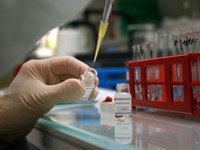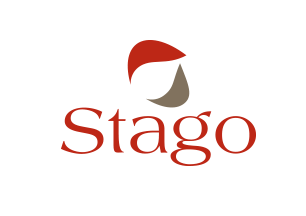The primary mission of Stago Group Research & Development (R&D) division is to develop products and solutions (automatic analysers, reagents, consumables, services, etc.) that meet the needs of biomedical scientists and clinicians, with the goal of improving treatment for haemostasis and thrombosis. Working alongside the scientific community, R&D also focuses on identifying and studying new markers and new exploration pathways in the area of IVD and Haemostasis.
The Desire and Means to Innovate
 Since its founding, Stago has consistently developed its products and introduced the necessary methods for their control, development and industrial production.
Since its founding, Stago has consistently developed its products and introduced the necessary methods for their control, development and industrial production.
Today, with more than 20% of its staff in Research & Development (R&D) and a level of investment higher than the average for the In Vitro Diagnostic (IVD) sector, Stago Group is determined to innovate in the fields of Hemostasis and thrombosis, with development teams in instrumentation and reagents, as well as prospective research teams and numerous scientific collaborations with university research teams.
The ability to develop complete systems (instruments + reagents + consumables + services) requires a variety of constantly changing skills, not just at the biological and clinical level, but also in chemistry, physics, mechanics, electronics, fluid science, optics, data processing, statistics and ergonomics, among other fields.
Finally, Stago must also respond to the customer’s expectation for improvement throughout the life cycle of its products. Stago has consequently introduced a system of continuous improvement within its R&D division and in the Industrial & Supply Chain division, in which all of these areas of professional activity play a critical role.
An Outward Looking Policy…
The world of healthcare and medical technology has displayed an increasingly rapid change over the last 15 years, particularly in biology (genetics, new markers, automation, regulation, etc.). Levels of expertise and know-how have been rising constantly and must continually incorporate the latest advances in order to anticipate future developments. Monitoring of the technological, scientific and medical domains is thus essential to ensure in-house development and integration of these new skills.
For example, in our sector it is essential to adapt, transpose and develop concepts and technologies from other fields in order to endow our products with key functions and characteristics guaranteeing differentiation (quality, reliability, productivity, precision, ergonomics, etc.).
Similarly, the acquisition of companies such as BioCytex (1994) for cellular Hemostasis and of Thrombinoscope and Synapse (2009) for hrombin generation, provide ample evidence of Stago's continuing quest to expand its skills in the Hemostasis field.
HemoSonics joined the Stago Group in 2017, bringing with it the company’s knowledge of point-of-care (POC) testing. Thanks to this new approach, Stago Group now offers a patented bedside testing system, enabling all health professionals to prevent the risk of bleeds in surgical, obstetrical or trauma settings, using a whole blood sample.
…in Synergy with the International Scientific Community
Since 1962, Stago Group has concentrated its attention on biomedical science, specialising in the "emerging" sector of Hemostasis. Thanks to this clear focus, the group is now recognized worldwide by the scientific community in this field. Stago continues to maintain and develop strong links with the Hemostasis community on a day-to-day basis by:
- Ensuring optimal presence at scientific events.
- Initiating and participating in studies with the foremost international university teams, thereby generating numerous scientific publications and communications.
- Organising regular meetings with key players in the healthcare sector in order to better understand the biomedical scientists needs and to provide them with constantly improving levels of service to ensure better therapy for their patients.
- Submitting subjects for collaboration on cutting edge research projects in order to discover and validate new areas and tools for investigation comprising a high degree of added medical value.
